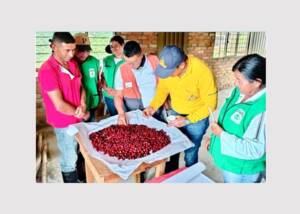Surging prices and capacity expansions to define $8.31 billion fluff pulp market in 2022, new Smithers data reports
News General news
The fluff pulp industry is set for a boom year in 2022, with record prices and recovering demand pushing global consumption to 6.90 million air dried metric tonnes (ADMTs). This will yield a to market value of $8.31 billion, up from $6.88 billion in 2021, according to exclusive forecasting in the new Smithers market study The Future of Fluff Pulp to 2027.

At the beginning of the year the price of fluff pulp is approaching $2,000 per air dried tonne – nearly two to four times its historic average. Demand has been stimulated by the recovery of the world economy post-Covid, and strengthened by the call for more sustainable materials in hygiene applications (diapers/nappies, toddler training pants, adult incontinence, and feminine hygiene goods) and nonwovens, especially wipes.
Smithers dedicated analysis on this segment examines the outlook for this critical year and the longer-term prospects through to 2027 – with a specific analysis on current and future demand, fluff mill capacities and investment, and competing technologies.
Despite several mill expansions in South America in the past five years, in 2022 global fluff pulp supply remains constrained even as demand continues to build. Swing production – mills switching from producing dissolving or papermaking pulps to make fluff pulp – will be key in the short and medium term to meeting customer demands. The volume of swing production now and through to 2027 is analysed in depth by Smithers, alongside both announced and unannounced mill expansions for the forecast period.
Overall world fluff pulp consumption will increase to 8.13 million air dried tonnes in 2027; equivalent to a compound annual growth rate (CAGR) of 3.4% for 2022-2027. The market will be unable to sustain the record prices seen in H1 2022, but will remain buoyant. Smithers forecasts global value will reach $8.63 billion in 2027, as prices and supply adjust towards historic norms.
North America is the key producer of fluff pulp. In 2022 it is the only world region that is a net exporter, although it is anticipated it will soon be joined by South America. New demand through 2022-2027 will come mostly from Asia, consuming 2.9 million air dried tonnes valued at $3.0 billion in 2022; it is also set to develop its first domestic fluff pulp production industry within the year.
Adding absorbency to disposable hygiene products remains the main use for fluff pulp. Consequently fluff pulp use will track demand for hygiene and other nonwovens goods in the post-Covid economy. In North America and Western Europe, these consumer segments are relatively mature, and are facing some distinct challenges that will change fluff pulp consumption patterns. Hygiene goods will account for nearly 90% of global volumes in 2022, but design changes will mean that growth will be essentially flat through to 2027. These include greater sales of diapers that use less or no fluff pulp in their absorbent cores.
Growth will be much faster in nonwoven substrate applications, especially airlaid constructions. This is supported by the global trend toward elimination of plastics and plastic waste, especially in wipes. Fluff pulp is one the most sustainable raw materials in the nonwovens inventory, wipes can contain 80-85% fluff pulp; and this can rise to 90% for other products like table covers. R&D is now focused on developing biodegradable airlaid product lines, without plastic binders or bonding fibres. There is also a small, but rapidly accelerating market, for fluff pulp in spunlace nonwovens.
Southern soft woods will remain the main tree species used in fluff pulp, this will be supplemented by other species, including South America eucalyptus grades, and a limited use of fluff pulp made from recovered/recycled sources.










